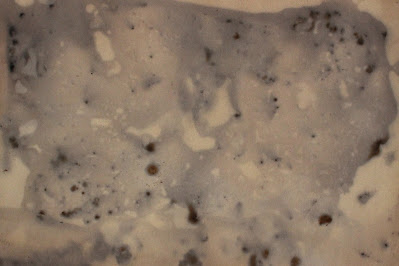My Guide to Rust Dyeing Paper
Nearly two years ago, I made a post about rust dyeing paper using watered down vinegar. It was my first time trying rust dyeing and I was reasonably pleased with the results. In the intervening time since then, I have tried rust dyeing in different ways and settled on using tea instead of vinegar. The tannins in the tea react with the rust on the metal objects to transfer that rust to the paper. It doesn’t give such bright orange marks, but it does add a nice colour to the paper, which compliments the rusty marks, and personally, I prefer it.
I have spent a lot of time working out the best technique, but this is what I have been using most recently.
I soak the paper (I use 140gsm cartridge paper) for a few minutes. How long you leave it for will affect the darkness of paper (although other factors play a role in that too.)

I make sure the rusted objects I want to use are dry before I use them. (Side note: from experience it is best to use objects that are as flat as possible. Because the paper is wet, and remains wet throughout the process, it can be very fragile and will rip if you use anything with sharp edges, such as nails.)

I dip the rusted objects in tea before placing them on the paper. I press down firmly to get best contact between paper and rust, but not too much that it makes a hole. I then carry on like this, making layers of paper and rusty objects until I have used up all my soaked paper.

When I’ve finished, I make sure I place heavy objects on top of the stack of papers to hold them together. From experience, the paper does tend to dry out a bit during this process, so I like to add some of the excess tea. I don’t add too much, because rust needs oxygen to form, but enough so that when you leave it for a while, it doesn’t dry out too fast.

How long I leave it for will depend on the temperature. (It works quicker when warm that when cold.) During the summer, indoors, I would often leave my paper to rust for 12 hours, but in spring outside, I have been leaving it for 48 hours. The length of time will affect the colour of the paper and the amount of rust that transfers. However, don’t leave it too long or it will start to smell!
And here are some of the results!

The results can be so varied, but I have yet to be disappointed with a whole batch of rust dyeing. Some pages just work better than others, whether because the contact with the rust object was better and so more could transfer, or because the object itself had more rust on. I would say it is important to give your rusty objects time to rust up again between each batch you do, so there is actually rust on them to transfer to the paper.






Comments
Post a Comment